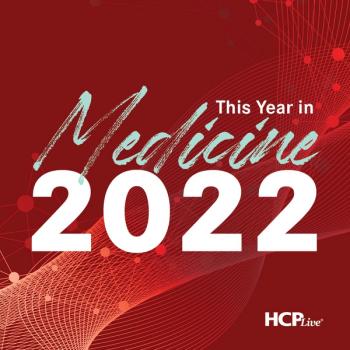
The president and chief executive officer of INmune bio provided perspective on the need to diversify the Alzheimer treatment landscape and the potential role of TNF inhibitors like XPro1595.

Marco Meglio, Assistant Managing Editor for NeurologyLive, has been with the team since October 2019. Follow him on Twitter @marcomeglio1 or email him at [email protected]

The president and chief executive officer of INmune bio provided perspective on the need to diversify the Alzheimer treatment landscape and the potential role of TNF inhibitors like XPro1595.

In addition to improving ON time in patients with Parkinson disease, ND0612 was well tolerated, with only 6.3% of patients randomized to the treatment discontinuing the trial.

Approved under the accelerated approval pathway, the current indication for lecanemab states the company must provide phase 4 study evidence to confirm the agent’s effect in Alzheimer disease.

For the first time ever, investigators identified a treatment benefit that extends the time to clinical conversion in RIS and reduces new or newly-enlarging T-weighted hyperintense lesions.

Marketed as Leqembi, the agent was approved through the accelerated approval pathway and was based on a major study featuring almost 900 patients with early Alzheimer disease.

Findings from a large-scale trial of adults aged 65 and older with Parkinson disease showed that treatment with pimavanserin was associated with lower risk of mortality than other atypical antipsychotics.

In the phase 3 Clarity AD trial, a 65-year-old patient treated with lecanemab died because of multiple cerebral hemorrhages after undergoing tissue plasminogen activator therapy for ischemic stroke.

The increased risk of dementia in patients showing early orthostatic hypotension was independent of the presence of concomitant supine hypertension and other factors associated with cognitive impairment.

With this new approval, the Zoom RDL becomes the newest addition to Imperative’s Zoom Stroke Solution, a complete stroke system designed for effective clot removal in ischemic stroke.

Data from a cohort of nearly 100 patients with Parkinson disease suggest there are shared nondopaminergic pathogenic mechanisms between depression and postural instability symptoms of the disease.

The director of the Montefiore Einstein Center for the Aging Brain provided perspective on a new study assessing the use of a novel tool aimed to confirm patients’ cognitive complaints and issues with mobility.

Patients with high dysautonomia scores showed significantly slower walking speed, decreased cadence, and shorter stride but increased time than the lower scored group in backward gait.

The case-control study identified numerous motor symptoms and signals that are associated with Parkinson disease diagnosis years after they begin to occur.

Over a 12-week trial, females with MS on bupropion demonstrated improvements in sexual satisfaction, sexual desire, vaginal moisture, and orgasm intensity.

Marketed as Briumvi, the TG Therapeutics treatment becomes the third anti-CD20 agent approved for relapsing multiple sclerosis and is expected to become available in the first quarter of 2023.

The executive director of Banner Alzheimer’s Institute discussed the efforts being done within the field to improve prevention and therapeutics for Alzheimer disease.

Clinician perceived cognitive performance was significantly predicted by multiple factors, including cognitive scores, physical disability, age, and depression.

Using focused ultrasound waves, the Exablate Neuro platform has now gained the FDA greenlight for medication-refractory essential tremor, tremor-dominant Parkinson disease, and second side of essential tremor.

The request to reverse CMS’s April 2022 decision is based on new data on lecanemab, an antiamyloid therapy from Biogen/Eisai that is currently under FDA review until January 6, 2023.

The professor of clinical geriatric epidemiology at Karolinska Institutet provided perspective on the FINGERS trial, the first study to show it is possible to prevent cognitive decline using a multidomain lifestyle intervention.

In preclinical studies, ENTR-601-44 has demonstrated a robust ability to skip exon 44 in the muscles of nonhuman primates and full-length human DMD mice.

After 6 weeks of treatment, WVE-N531 was found to be safe, well-tolerated, and resulted in mean dystrophin production that was below the level of quantification.

James Galvin, MD, MPH, director of the Comprehensive Center for Brain Health at the University of Miami Miller School of Medicine, provided insight on the unmet needs for dementia with Lewy bodies, and whether success in Alzheimer disease can help.

Using a cohort of more than 2500 patients with MS on disease-modifying therapies, treatment initiation within the first 2 years of disease onset was more beneficial on patient-reported outcomes than 2-4 years postonset.

Short objective sleep duration was associated with weight regain and attenuated improvements in body composition one year after weight loss, independent of intervention allocation, age, and sex.

Almost 3 years since the beginning of the pandemic, continuous research efforts have begun to paint a better picture of the impact the virus has on the brain and the central nervous system.

In the largest collected of PML DNA samples, the study identified 4 immune-linked, high effect size, rare variants for use in an iatrogenic PML risk genetic test.

AOC 1001, an agent consisting of a proprietary monoclonal antibody that binds to the transferrin receptor 1, was safe, tolerable, and showed significant reductions in DMPK, a disease-related mRNA.

Although the effects of the educational intervention weren’t seen at 3 months, investigators noticed significant differences relative to standard of care at 12 months.

The chief medical officer of Alzheon detailed the efficacy, safety, and potential of ALZ-801, an investigational anti-amyloid therapy being assessed in high-risk individuals with early Alzheimer disease.